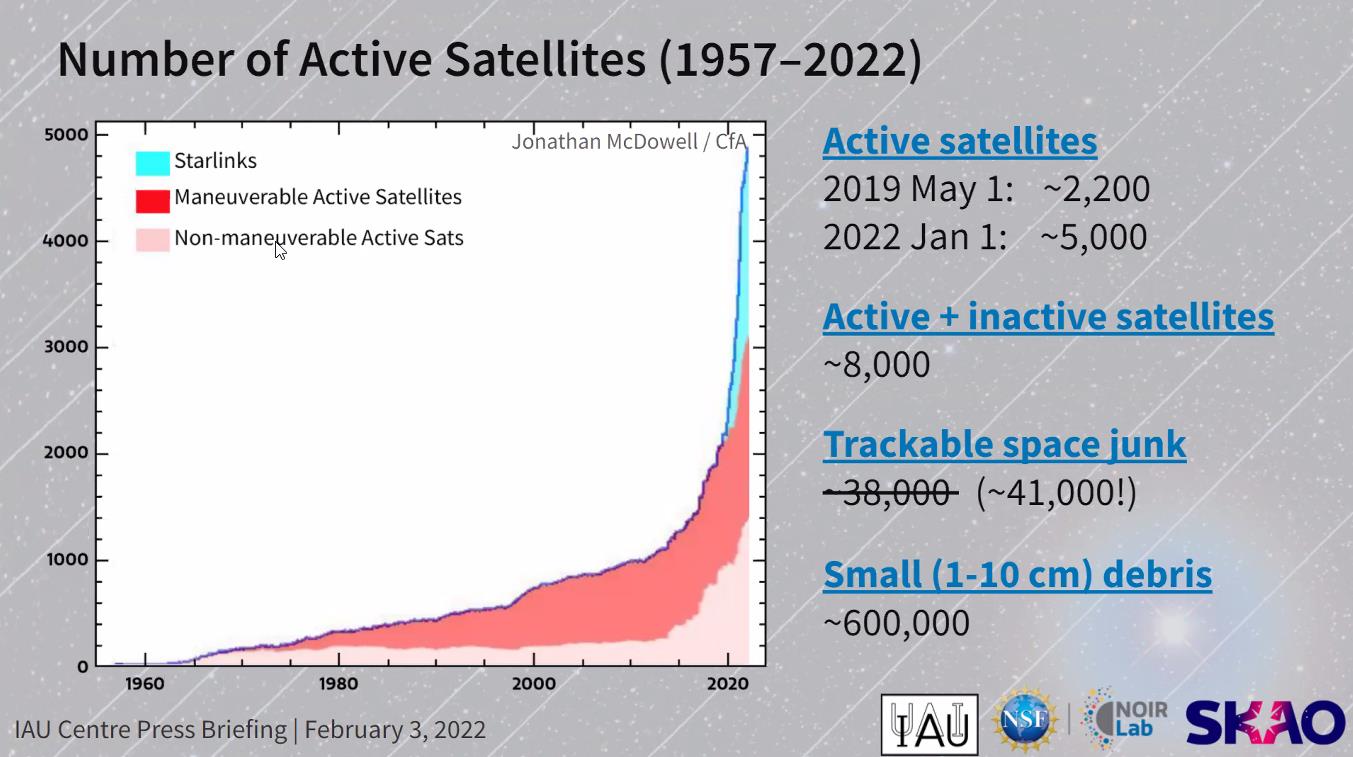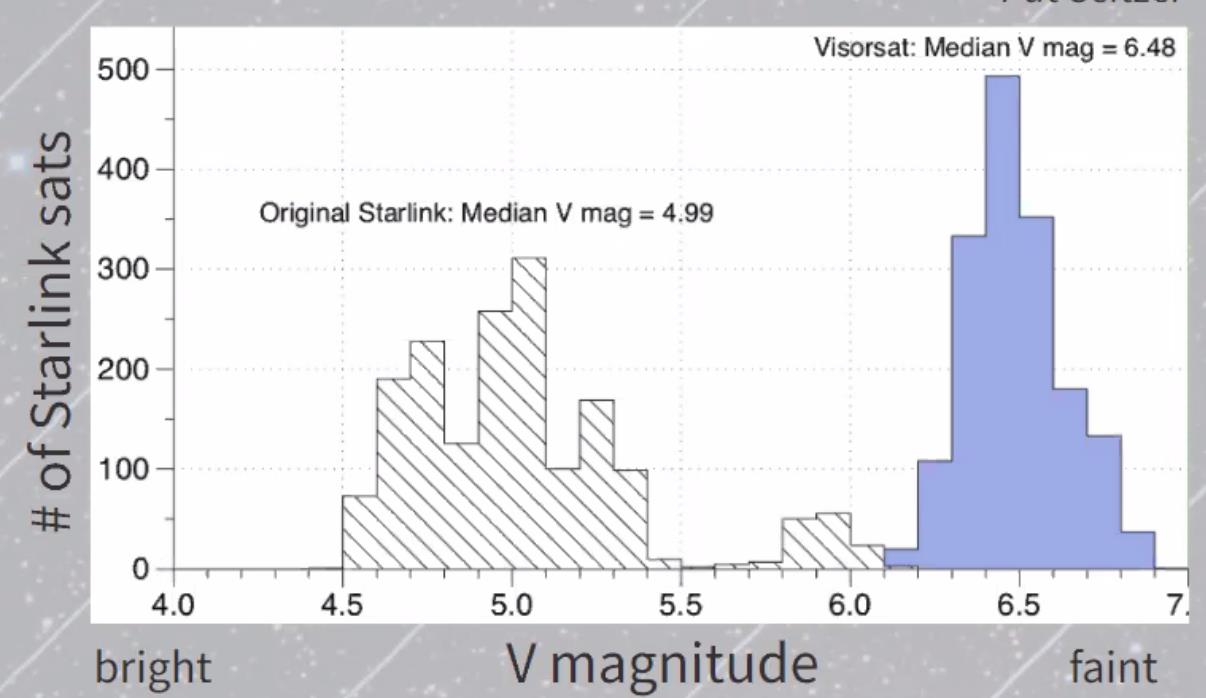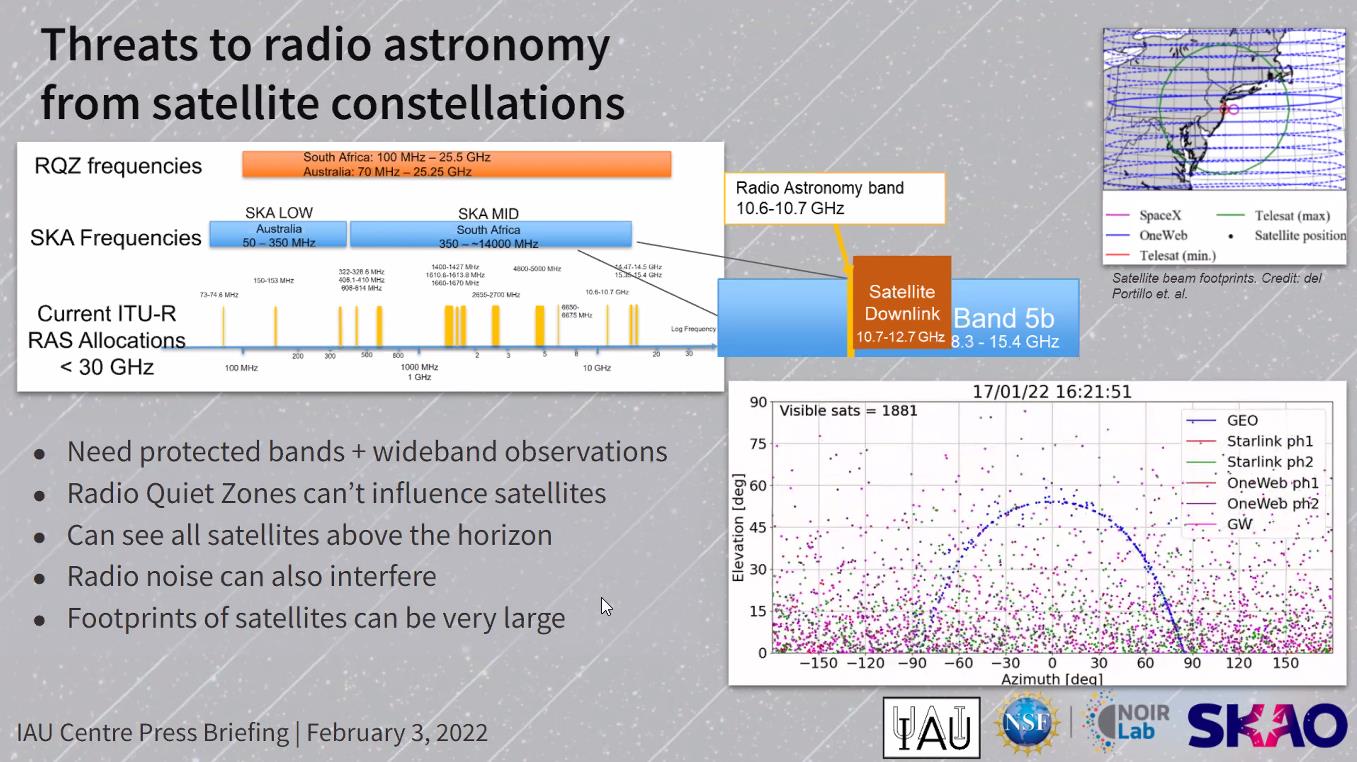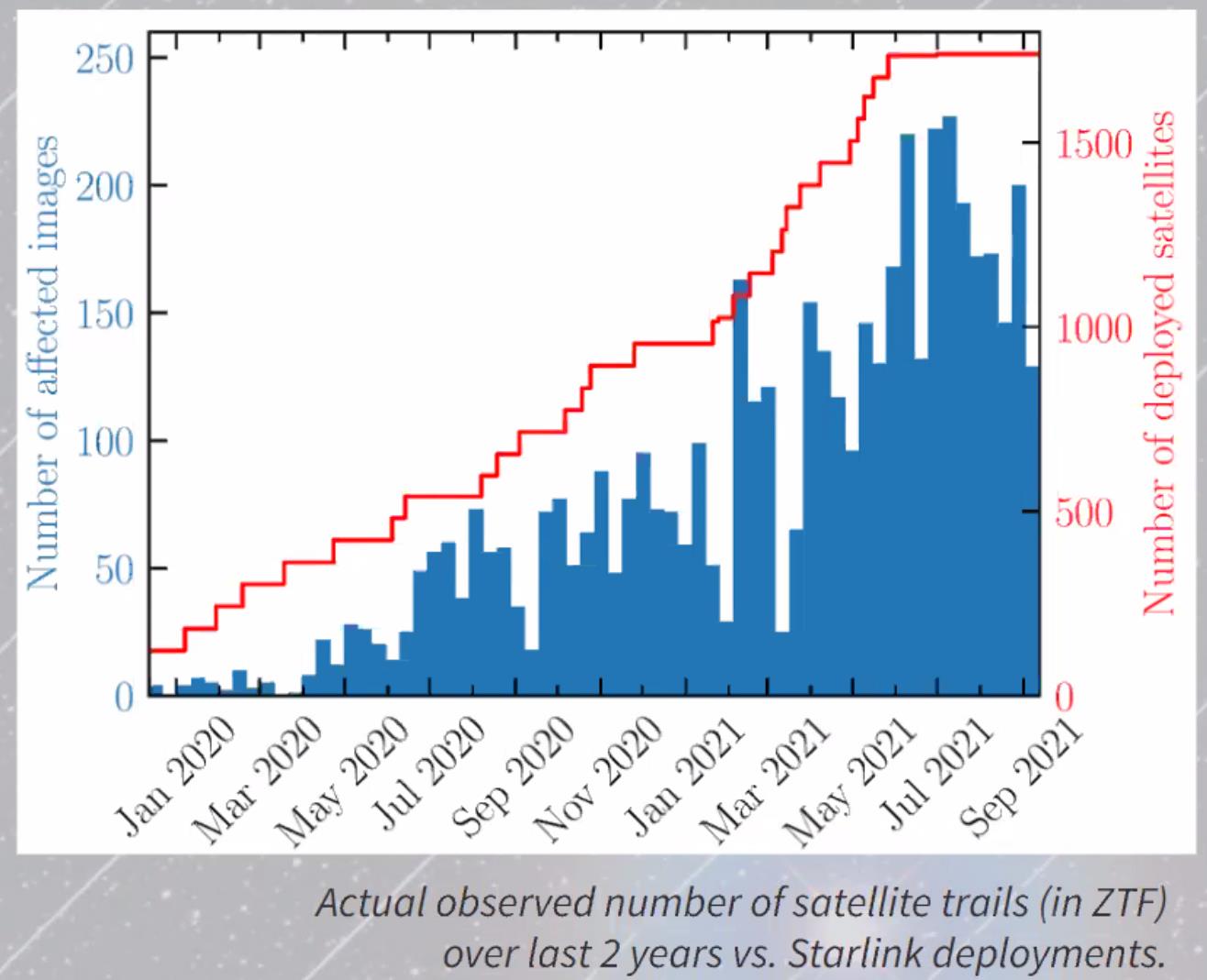Ask Ethan: Do we still need ground-based astronomy?
For nearly all of the natural history of planet Earth, the sights of a clear, dark night sky has been accessible to all of our inhabitants. Only since the dawn of widespread electrification has artificial lighting become a hinderance to astronomy, and it’s only been more recently — since the dawn of the space age — that satellites have confounded our terrestrial observations. The science of astronomy, arguably the oldest science of all that likely even predates homo sapiens, has never had more obstacles to contend with.
Given the recent flurry of new satellites that have gone up since 2019, their already significant impact on astronomy, and with many more certain to come, does ground-based astronomy still have a future? Some people are asking whether it’s time to transition the entire enterprise to space, including George Hampton, who writes in to ask:
“How important is ground based astronomy for science now that we are getting instruments into space? I understand that there are far more instruments on the ground but being above the atmosphere has so many advantages that it might be that the bulk of new discovery comes from space based astronomy.”
This is a common line of thought, particularly for those who are drawn in by the allure of commercial benefits of these mega-constellations of satellites, like globally accessible high-speed internet. Let’s look at the facts together.

On February 3, 2022, the International Astronomical Union launched a new center: for the Protection of the Dark and Quiet Sky from Satellite Constellation Interference. From the launch of the first satellite, Sputnik, in 1957, until May of 2019, the number of active satellites in Earth’s orbit remained relatively low, never exceeding 2,200 at any one time. Just 32 months later, at the start of 2022, that number had skyrocketed to approximately 5,000, largely driven by SpaceX and their new array of Starlink satellites.
Designed to orbit in criss-crossing train-like patterns, these satellites were initially startlingly bright: as bright as perhaps the 20th brightest star in the sky upon launch, and still visible to the naked eye in their final orbits. By controlling their orientation and adding a visor to the satellites, the current generation of Starlink satellites is significantly fainter, but still brighter than the minimum acceptable recommendations put forth by astronomers during the SATCON1 and SATCON2 workshops.
Moreover, this is just the beginning of the story, as — when you combine the filings submitted to the Federal Communications Commission (FCC) and the International Telecommunication Union (ITU) — we can anticipate over 100,000 new satellites entering Earth’s orbit over the coming decade.

There are three major problems with these satellites when it comes to ground-based astronomy, and each one is a complicated issue without an easy solution.
- There are going to be a tremendous number of these satellites.
- Even when in their final orbits, they’re still going to be very bright.
- And they’re going to be moving very quickly, particularly since they’re in low-Earth orbit, meaning they’re going to intercept a lot of astronomical real estate, and every observation will be at risk.
In astronomy, we measure how bright an object appears on the magnitude scale, and the current satellites that are being launched today will range in magnitude from +6.5, right at the threshold of naked-eye viewing, to +9, which can be seen with the aid of large binoculars or any telescope.
This, in many ways, is already catastrophic. There are only ~9000 naturally occurring objects in Earth’s sky that are magnitude +6.5 or brighter, and only ~120,000 that are magnitude +9 or brighter. Even if every single satellite provider voluntarily agrees to, and meets, the recommendations put forth by astronomers (and only three companies have joined that effort so far), there will soon be as many satellites in the sky as there are naturally occurring objects visible with binoculars and most telescopes.

Some observatories, mind you, will be just fine. Sure, there will be the occasional streak that passes through the telescope’s field of view, and that streaked portion of the data will have to be thrown away. So long as the detector recovers quickly, and the telescope’s field-of-view is sufficiently narrow, most of the data will still be useful for scientific purposes.
But there will be all sorts of classes of scientific observations that will suffer tremendously. In visible light and the near-infrared, any observatory that has a wide field of view and/or sensitive detectors will be tremendously affected. This includes automated sky surveys designed to find and identify objects like potentially hazardous asteroids, variable objects, and transient events like stellar outbursts and explosions. Quite literally, Earth will be less safe as a result, particularly from a “Don’t Look Up” type of scenario; fewer potentially hazardous asteroids will be discovered, and those that are found will have poorer orbit determinations as a result of this satellite pollution.
For specific examples, observatories like the Zwicky Transient Facility, Pan-STARRS, and the upcoming Vera C. Rubin observatory will suffer tremendous science losses.

Meanwhile, over in the radio band, efforts to measure fine details and polarization in the cosmic microwave background will suffer, as will observations of molecular gas emissions, searches for organic molecules, studies of reionization, and studies of high-mass star forming regions.
At present, there are no national or international protections that are in place for optical astronomy, and there are only very limited protections for radio observations. Above and beyond the damage that individual, intact satellites will inflict on astronomy, there’s also an unprecedented potential for satellite debris.
Thus far, approximately 1% of the satellites launched since May of 2019 have failed, which means they’re in uncontrolled orbits. Once the number of satellites starts rising into the tens of thousands in low-Earth orbit, at about ~500-600 km in altitude, collisions start to become inevitable. While individual satellites are reflective, satellite debris is much moreso, as a fragmented satellite will have an exponentially larger surface area, as well as uncontrolled orientations. This will increase the overall brightness of the night sky, and will harm all astronomers — naked-eye, amateur, and professional alike — seeking to observe the Universe.

So why not just put everything in space, then? After all, we have a suite of space-based observatories, and they’ve been among the most valuable astronomical facilities of all-time.
The simple answer is: we can’t, not unless we invest a tremendous amount above-and-beyond what we’ve ever invested in astronomy, and not unless we’re also willing to accept second-rate science compared to what we’d get on the ground were satellite pollution not an issue. That’s right: doing astronomy from the ground enables us to do things that we cannot do from space: not…
Read More: Ask Ethan: Do we still need ground-based astronomy?

